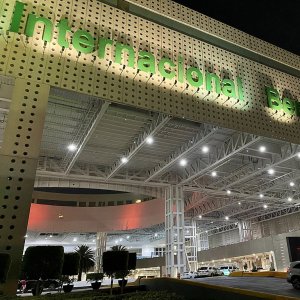
Mexico City’s Airspace Unprepared for the Future
 By Emilio Aristegui | Junior Journalist and Industry Analyst -
Tue, 10/19/2021 - 20:48
By Emilio Aristegui | Junior Journalist and Industry Analyst -
Tue, 10/19/2021 - 20:48
Mexico’s airspace issues continue to grow, raising major challenges for the country’s aviation industry. The plan to use the old Mexico City International Airport (AICM) and the new Felipe Angeles International Airport (AIFA) simultaneously to tackle the city’s airspace traffic might not be sufficient to address the country’s current and future air traffic needs, warn industry experts.
A recent report by non-commercial R&D center MITRE highlights that there are major concerns with the proposed solution of the dual function ability of both AICM and AIFA. “The importance of the agile transfer of passengers between flights is mentioned as an important questioning of the AICM and AIFA alternative.” Not only does the organization show major concerns for agile passenger transfer, as MITRE worries that the Mexico City airspace will lose competitiveness in favor of other cities because of its inability to host the desired aerospace operations that the city and country perform nowadays. “Panama, Houston and others will capture much of that transfer traffic,” according to MITRE. The center was created in the 1940s in the Massachusetts Institute of Technology (MIT) and has worked with the Mexican government since 1996, helping Mexico find alternatives or complementary ideas for the extremely saturated AICM. As the government and the center have been working together to reduce delays while creating long-term solutions for the country’s airspace.
Mexico has also been severely affected by the recent downgrade of its airspace category from a Category 1 to a Category 2 earlier this year, as reported by MB. The redesign of the Mexican airspace has been a major challenge for the government and the industry. Even though the Federal Civil Aviation Agency (AFAC) and the Federal Aviation of Administration (FAA) have been working tirelessly to regain the Category 1 airspace for Mexico.
Not only does the Category 2 downgrade represent a major safety and security concern for the country, it also represents a crucial challenge for airlines. As FAA stated on a press release “the new rating allows Mexican air carriers to continue existing service to the US, (but) it prohibits any new service and routes.” Mexico’s connectivity and growth continue to be at risk with this agglomeration of problems, which have slowed down the industry’s recovery from the COVID-19 pandemic.
AIFA is set to open in March 2022. This project represents an important investment from the government as Mexico tries to improve the airspace of the metropolitan area of the capital. However, concerns have risen on whether the project will be able to deliver significant results for passengers and other aerospace companies. The airport has also been criticized recently because of its location, which will be inconvenient for numerous travelers. Uber fares, for example, are more expensive than some airplane tickets for national travel. An Uber X fare from Paseo de la Reforma, which is one of Mexico City’s most popular avenues is priced at nearly MX$800 (US$39). Compared to an average flight from Mexico City to Cancun via Volaris, which costs between MX$500 (US$24) and MX$900 (US$43), as reported by MB.
















